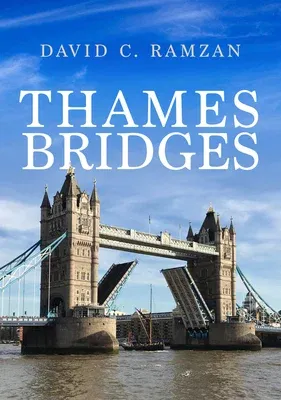From a low road bridge crossing the Fosse Way near Trewsbury Mead to the
towering Queen Elizabeth Bridge linking Kent to Essex, the River Thames
is crossed by over 200 bridges, some simple wooden or stonework
structures, others magnificent architectural constructions. Stretching
across the southern counties of England, starting as a trickle in a
Gloucestershire meadow to the vast expanse of tidal water leading into
the North Sea, the course of the River Thames defined local kingdoms,
tribal lands and later the counties situated to the north and south of
the river. Throughout this time, although London Bridge was the first
permanent structure to traverse the river in London, other bridges
crossed the Thames further upstream, first simple structures erected for
moving livestock and carts from one field to another, where the waterway
dividing farmland and pasture was too wide or too strong to cross by
fording, then new building techniques made it possible for carpenters
and stonemasons to construct permanent structures to link communities,
hamlets, villages and towns. Of the 200 bridges many have fascinating
stories to tell, of their construction and historical events which
surround them, from prehistory and Roman times up to the twenty-first
century. In this book author David C. Ramzan explores the economic and
social history of these Thames bridges, some unassuming, but no less
important, while others are unique in design and construction.

